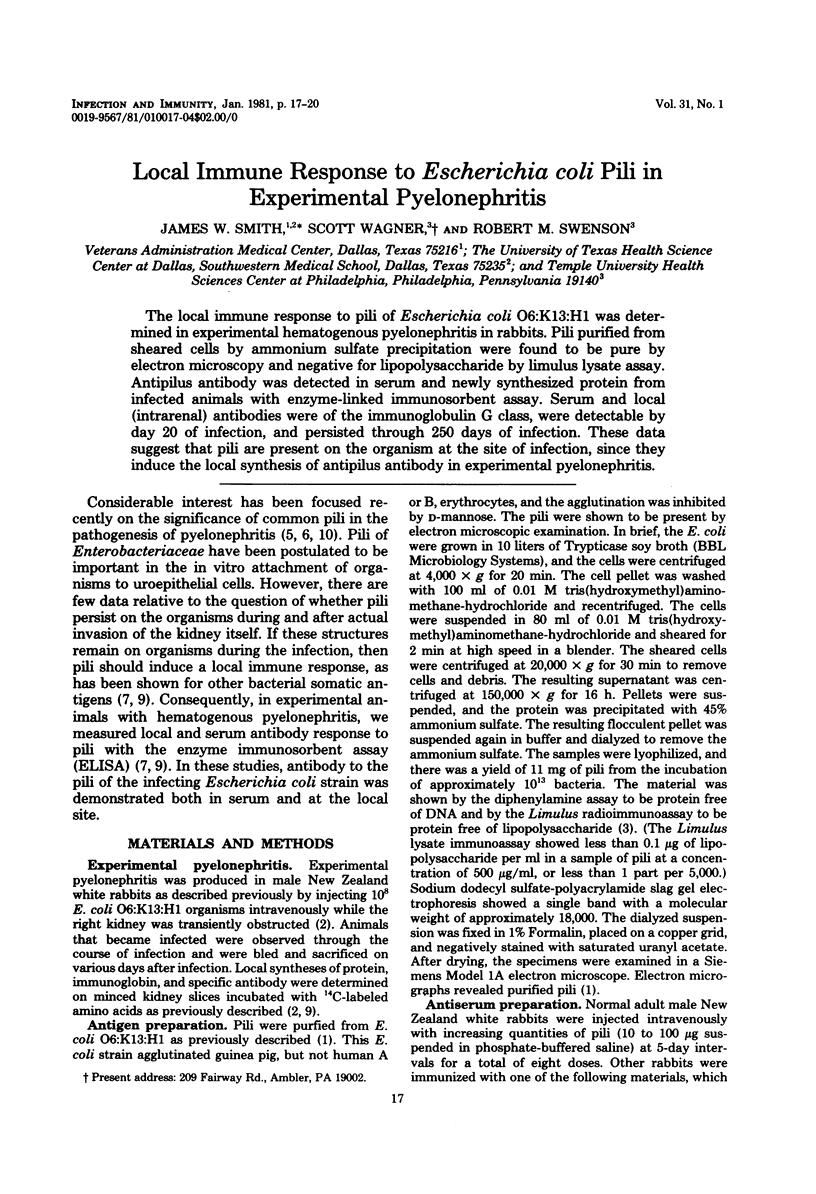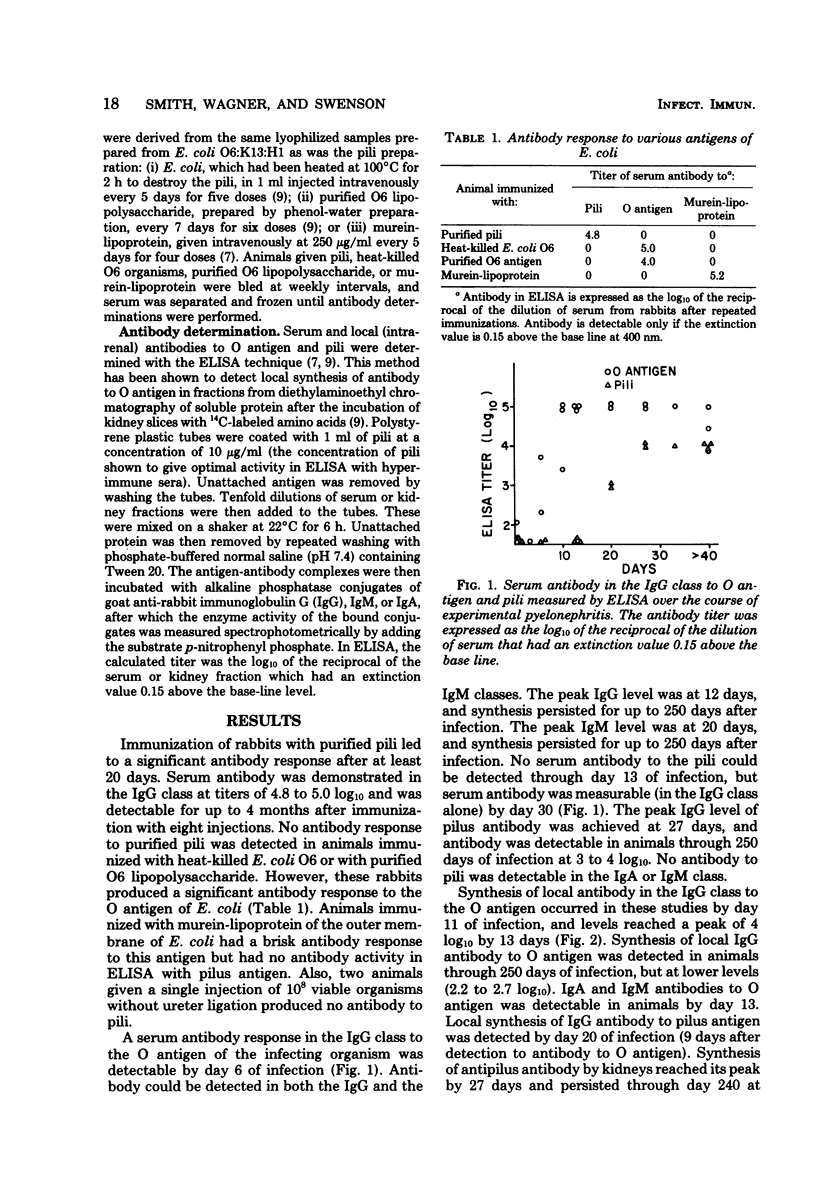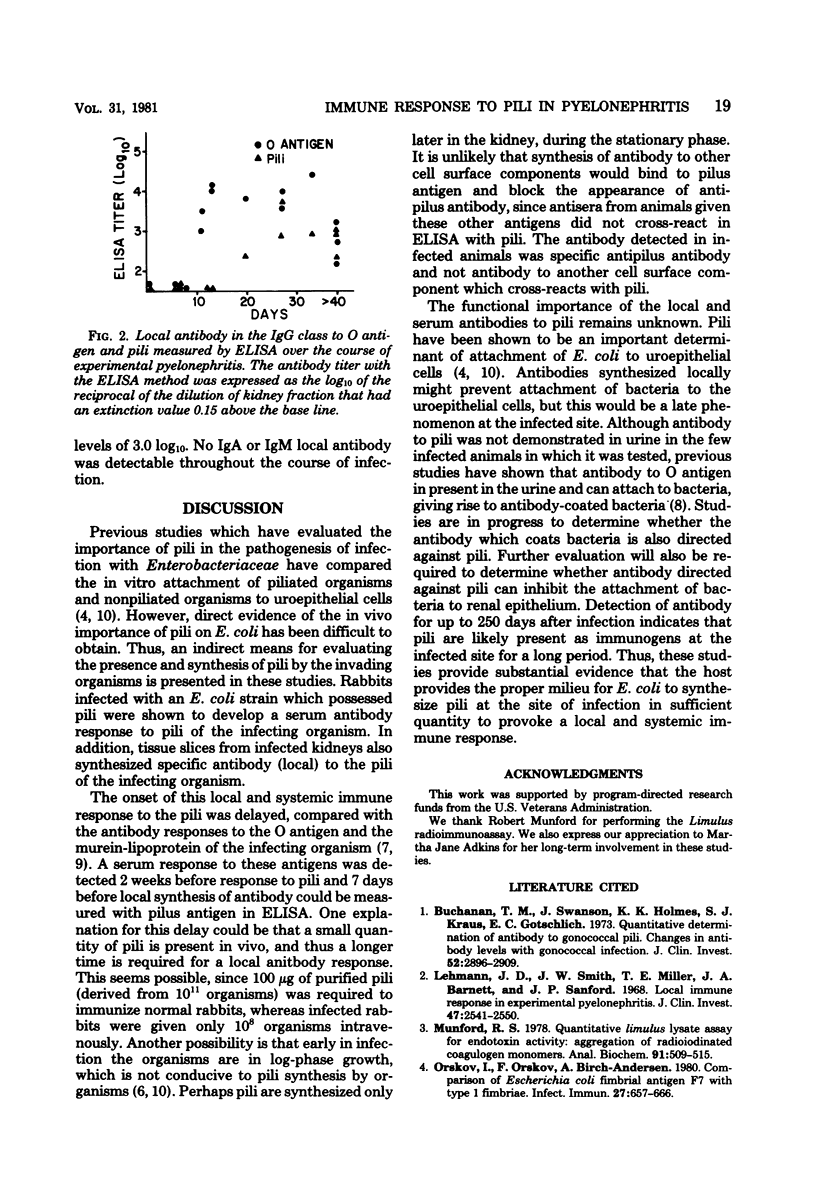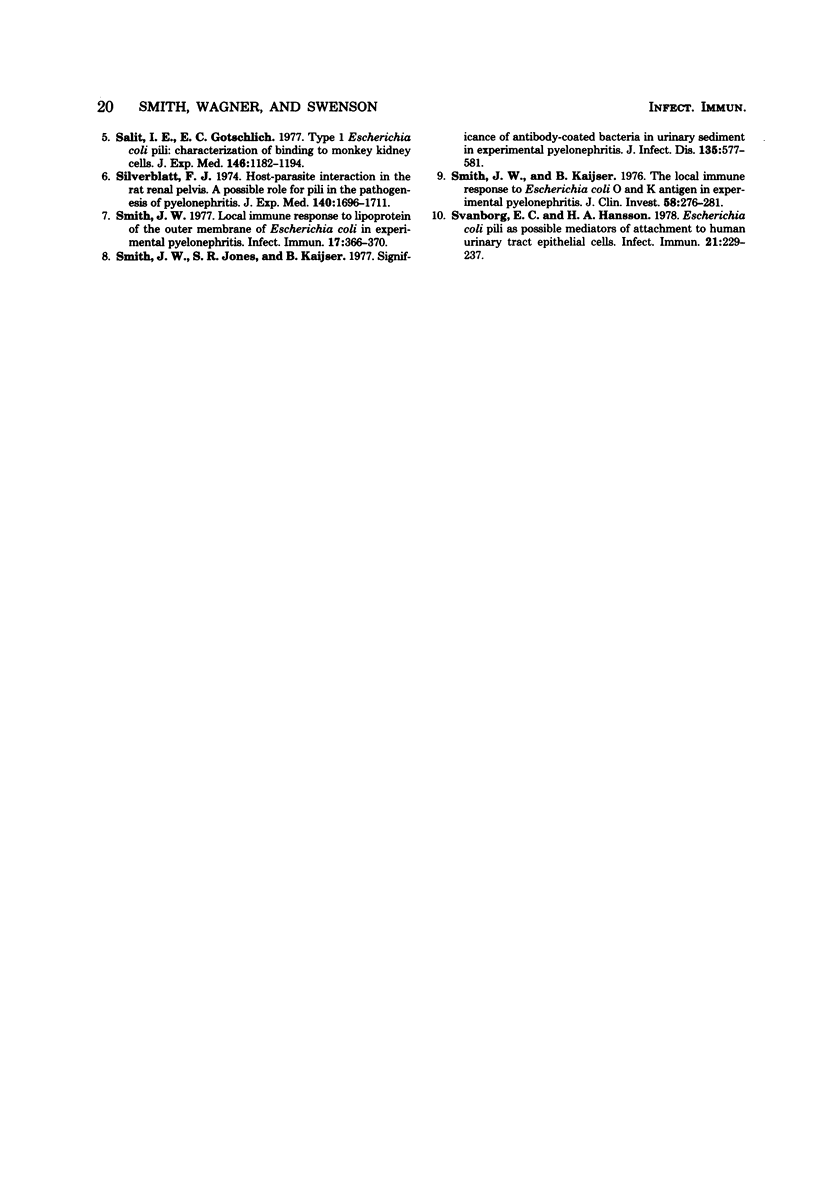Abstract
The local immune response to pili of Escherichia coli O6:K13:H1 was determined in experimental hematogenous pyelonephritis in rabbits. Pili purified from sheared cells by ammonium sulfate precipitation were found to be pure by electron microscopy and negative for lipopolysaccharide by limulus lysate assay. Antipilus antibody was detected in serum and newly synthesized protein from infected animals with enzyme-linked immunosorbent assay. Serum and local (intrarenal) antibodies were of the immunoglobulin G class, were detectable by day 20 of infection, and persisted though 250 days of infection. These data suggest that pili are present on the organism at the site of infection, since they induce the local synthesis of antipilus antibody in experimental pyelonephritis.
Full text
PDF



Selected References
These references are in PubMed. This may not be the complete list of references from this article.
- Buchanan T. M., Swanson J., Holmes K. K., Kraus S. J., Gotschlich E. C. Quantitative determination of antibody to gonococcal pili. Changes in antibody levels with gonococcal infection. J Clin Invest. 1973 Nov;52(11):2896–2909. doi: 10.1172/JCI107486. [DOI] [PMC free article] [PubMed] [Google Scholar]
- Edén C. S., Hansson H. A. Escherichia coli pili as possible mediators of attachment to human urinary tract epithelial cells. Infect Immun. 1978 Jul;21(1):229–237. doi: 10.1128/iai.21.1.229-237.1978. [DOI] [PMC free article] [PubMed] [Google Scholar]
- Lehmann J. D., Smith J. W., Miller T. E., Barnett J. A., Sanford J. P. Local immune response in experimental pyelonephritis. J Clin Invest. 1969 Nov;47(11):2541–2550. doi: 10.1172/JCI105936. [DOI] [PMC free article] [PubMed] [Google Scholar]
- Munford R. S. Quantitative Limulus lysate assay for endotoxin activity: aggregation of radioiodinated coagulogen monomers. Anal Biochem. 1978 Dec;91(2):509–515. doi: 10.1016/0003-2697(78)90537-7. [DOI] [PubMed] [Google Scholar]
- Orskov I., Orskov F., Birch-Andersen A. Comparison of Escherichia coli fimbrial antigen F7 with type 1 fimbriae. Infect Immun. 1980 Feb;27(2):657–666. doi: 10.1128/iai.27.2.657-666.1980. [DOI] [PMC free article] [PubMed] [Google Scholar]
- Salit I. E., Gotschlich E. C. Type I Escherichia coli pili: characterization of binding to monkey kidney cells. J Exp Med. 1977 Nov 1;146(5):1182–1194. doi: 10.1084/jem.146.5.1182. [DOI] [PMC free article] [PubMed] [Google Scholar]
- Silverblatt F. J. Host-parasite interaction in the rat renal pelvis: a possible role for pili in the pathogenesis of pyelonephritis. J Exp Med. 1974 Dec 1;140(6):1696–1711. doi: 10.1084/jem.140.6.1696. [DOI] [PMC free article] [PubMed] [Google Scholar]
- Smith J. W., Jones S. R., Kaijser B. Significance of antibody-coated bacteria in urinary sediment in experimental pyelonephritis. J Infect Dis. 1977 Apr;135(4):577–581. doi: 10.1093/infdis/135.4.577. [DOI] [PubMed] [Google Scholar]
- Smith J. W., Kaijser B. The local immune response to Escherichia coli O and K antigen in experimental pyelonephritis. J Clin Invest. 1976 Aug;58(2):276–281. doi: 10.1172/JCI108469. [DOI] [PMC free article] [PubMed] [Google Scholar]
- Smith J. W. Local immune response to lipoprotein of the outer membrane of Escherichia coli in experimental pyelonephritis. Infect Immun. 1977 Aug;17(2):366–370. doi: 10.1128/iai.17.2.366-370.1977. [DOI] [PMC free article] [PubMed] [Google Scholar]


